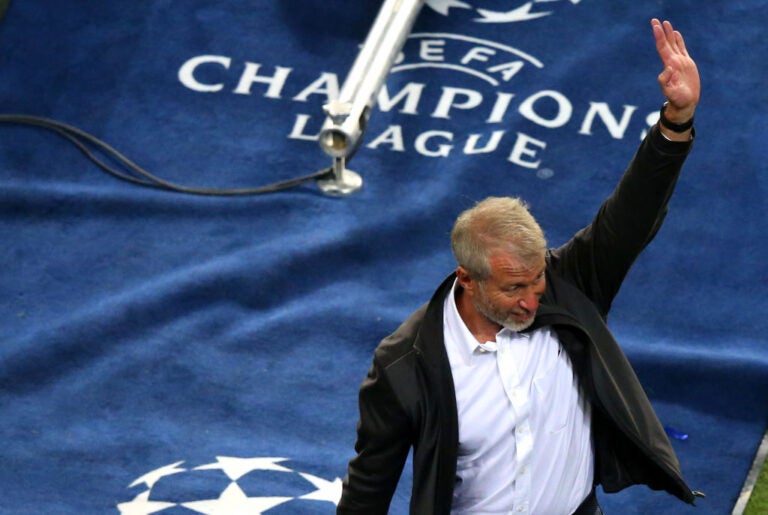English Football Reckons With Its Role in the Climate Crisis
Why this matters
Climate experts continue to press world leaders to do more to limit the damage resulting from climate change, and sport lies directly in the crosshairs of these activists due to the size of the industry and the platform it possesses.
As the world faces the early effects of a worsening climate crisis, English football is making changes to address the problem. As is the case with many other industries, however, activists argue that the birthplace of the world’s biggest sport has lacked urgency in its response – and must fundamentally change if it is to meet the moment.
Last year saw the second-largest annual rise of fossil fuel emissions ever recorded, worsening weather patterns, and high-temperature records set across the world. The global football industry produces more than 30 million tons of carbon dioxide every year, about the same as a small country such as Denmark. According to one projection, continuing warming means that one-quarter of English football grounds will be at risk from flooding every season within the next three decades.
Grassroots football in the United Kingdom already loses over one month of matches every season due to bad weather. Every professional club in England manages youth academies in addition to their senior squads, meaning the decimation of pitches across the country doesn’t just hurt school children or local park-dwellers. As inclement weather and other environmental decay hit the United Kingdom, it won’t be long before even the most prolific clubs are forced to adapt.
As a result, top clubs and other football organizations have started initiatives to encourage sustainable habits in their communities. The Football Foundation, the UK’s largest sports charity, is trying to reach over 20,000 “good quality” grass pitches by 2030 with its Power Up Your Grass Pitch campaign, facilitating an additional 30,000 matches a week by 2030. The campaign is not directly linked to risks associated with climate change, but environmental engagement is undoubtedly increasing across the football industry. In the leadup to the 2021 United Nations Climate Change Conference (COP26), Planet Super League created CUP26, a campaign encouraging children to score goals for their favorite clubs by completing green actions like eating a meat-free meal. Other initiatives include Sky 0 (net zero broadcasting by 2030) and the Premier League Primary Stars program, which educates children about plastic pollution.
In terms of English clubs’ actions, the best example of combating climate change – perhaps the best example across the industry as a whole – is the Forest Green Rovers of the EFL League Two. The Rovers have been recognized by the United Nations as the world’s first carbon-neutral football club, shining a spotlight on the hypocrisy of other clubs’ endeavors toward environmental sustainability.
Looking Inward
Almost every club has environmental initiatives, such as Chelsea F.C.’s 100 percent recycling at both the club’s Stamford Bridge stadium and training ground at Cobham. But many such interventions ring hollow in an industry built on extensive international travel and luxurious private jets. Travel accounts for 61 percent of clubs’ total emissions. Beyond the day-to-day practices of clubs, Chelsea (owned by oil and airline magnate Roman Abramovich) is just one example of a team that owes much of its success and revenue to ownership groups financed by fossil fuel profits.
Activists see opportunity for clubs to encourage sustainability efforts today, even as they contribute to carbon emissions. Russell Seymour, chief executive of the British Association for Sustainable Sport (BASIS), argues clubs can show that “living, working, and playing sustainably can be done and is as good, or probably even better, than before.” Katie Cross, the founder of the football collective action organization Pledgeball, tells me that many clubs fail to recognize the benefits of addressing sustainability. This happens for many reasons, including “lack of capacity to properly address environmental sustainability and concerns over fans’ responses.”
Research conducted by Cross and the University of Brighton’s Jennifer Amann suggests that the sense of community, social norms, collective efficacy beliefs, and group-based emotions of football club supporters can be leveraged to address environmental issues. Whitehawk F.C., a semi-professional club, partnered with Pledgeball in 2020 to start a league against other teams to compete in their efforts to limit carbon emissions. By translating the competitiveness of football to this league, Amann and Cross found that fans were getting “quite upset” if they lost a match.
This isn’t surprising. Supporting psychological evidence suggests people will recycle more if their recycling rates are compared publicly with the rates of neighbors.
Different sets of Whitehawk supporters who identified as either an “environmental newcomer” or “environmental expert” both believed making pledges in support of their football team on a regular basis was a “new and motivating way” to engage with climate change. Promisingly, research conducted by Brian McCullough, Associate Professor of Sport Management at Texas A&M University, found that fans change their everyday behaviors by reevaluating their relationships with nature and other people after experiencing environmental initiatives at sporting events. This was the case for fans of all ages across the political spectrum, speaking to the “universality of sport through the collective identity of being a sport fan of a specific team.”
Pledgeball recognizes the perception of climate change as a macro issue and the necessity of environmental sustainability at every level of the sport. “Research demonstrates that large proportions of people, and therefore organizations, are paralyzed in the face of climate change due to it being such an overwhelmingly large problem over which they seemingly have no control,” says Cross. This means that some clubs choose not to engage with Pledgeball’s work, despite the fact that Premier League clubs also have more carbon emissions to offset than a club of Whitehawk’s stature. So, where are the areas for improvement at the elite level?
Only 2 percent of sustainability programs achieve their desired outcome. There is often little consideration of wider context in a club’s environmental assessment, such as the emissions produced by other people as a result of the club’s activities. As Sport Positive Summit’s CEO, Claire Poole, suggested to the BBC, “You would have to accurately account for where spectators, match-day staff, squads and other staff have traveled from and modes of transport used,” which could vary every week.
Currently, there isn’t a feasible alternative to flying for international fixtures aside from slower road and rail options. Manchester United were heavily criticized for flying 100 miles to Leicester this past October and competitors in English football took notice. Forest Green owner Dale Vince told the BBC “it would be impossible for the decision Manchester United made to happen at our club.” He also called environmental initiatives at other clubs “bolt-on programs” that are not embedded into the organization’s culture.
Impacting Fans and Communities
Around 70 percent of the football industry’s emissions are accounted for by fan travel. In Germany, Borussia Mönchengladbach are providing free public transport use to all ticket-holders within a 186-mile radius of the stadium. Around 37 percent of fans arrive at Mönchengladbach by train or bus while 18 percent still drive to matches. Cycling is a popular alternative, and the ground has space for 1,000 bicycles. Tottenham Hotspur F.C., currently the greenest club in the Premier League, only has 180 bike spaces. FIFA have previously suggested supplying bikes for fans near stadiums as a realistic intervention for “practically every club.”
Tottenham’s new stadium, which cost more than $1 billion to build, runs on carbon-neutral gas and 100 percent renewable energy. Food contributes to a quarter of the UK’s carbon footprint, so Spurs are nudging supporters toward consuming less meat by offering beetroot burgers and tofu curry as alternatives. The club are also reducing single-use plastics with reusable cups and a “zero to landfill” waste management scheme.
Despite such measures, a significant gap remains after COP26 between current commitments and football embracing sustainability wholeheartedly. The Premier League signed up for the UN Sports for Climate Action Framework, pledging to reduce 50 percent of emissions by 2030 and achieving net-zero emissions by 2040. Tottenham, Arsenal, Liverpool, and Southampton have also signed up to the UN’s framework. Still, none is at the new level introduced at COP26 that also requires public annual reports on progress toward these goals. Forty-six organizations signed up to this level, meaning 251 signatories to the original framework did not.
Related: The Olympic Games Keep Breaking Their Budgets. Can Skyrocketing Costs Be Controlled?
There is a lingering question of whether football’s governing bodies should be mandating clubs adopt climate action. Clubs are responsible for their own travel arrangements, meaning the Premier League cannot enforce road and rail as alternatives to flying. However, clubs in the German Bundesliga and Bundesliga 2 voted last month to include sustainability as part of the club licensing process, containing sanctions if a club fails to meet the minimum criteria. The English Football League, comprising the three professional divisions below the Premier League, have since followed, agreeing to a partnership to support all 72 clubs in their bid to become more environmentally sustainable.
Andrew Welfle of the Tyndall Centre for Climate Change Research at the University of Manchester says point deductions or financial sanctions are not the “way forward” for sport environmental initiatives: “Sports clubs have developed and guard their reputations fiercely. No club wants to be at the bottom of environmental performance league tables. This may be a better framework to incentivize actions.” Forest Green owner Vince agrees, saying that he doesn’t think change needs to be forced: “The most important way to get the message out is just to go ahead and do it, and if people like it, then they might be interested to follow it.”
With 3.5 billion worldwide viewers, football is unique in maneuvering people past powerful cultural barriers. Culture flows from stadiums to the streets, creating conversations and communities across countries and continents. As the biggest sport globally, football could be teaching billions of people to prevent irreversible climate change, but the conversations surrounding the issue are still lacking. This cannot be ignored any longer.
Football For Future are forging this connection between football and environmental sustainability. The charity’s founder, Elliot Arthur-Worsop, says, “The greatest role that football has in facilitating a sustainable transition across society is by raising awareness about climate change, … reframing this important conversation in a way that has never been done before.”
Perhaps then, rather than focusing on environmental actions themselves, which clearly shouldn’t be neglected in order to meet the legally binding targets of net-zero by 2050, the game’s true power lies in persuading others to act, particularly younger, more impressionable fans.
As BASIS’s Seymour tells me, “Football’s true power lies in the opportunity to act as a carrier for genuine messages to fans and players around more sustainable behavior, just as it has done for messaging around racism, sexism and other social issues.”
Still, Elliot Arthur-Worsop believes, “the question of accountability and whose responsibility it is to make the game more environmentally sustainable” remains.
“Climate change hasn’t really made its way into the stadium,” writes Brighton researcher Amann. “Extreme heat, flooding or air pollution is often viewed as something different.”




